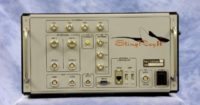
With the full bench of the 4th U.S. Circuit Court of Appeals voting, the decision allows investigators to get the information under the legal theory that it has been disclosed to third parties — in such instances, telephone companies, Politico said.
“The Supreme Court may in the future limit, or even eliminate, the third-party doctrine. Congress may act to require a warrant for CSLI [cell site location information.] But without a change in controlling law, we cannot conclude that the Government violated the Fourth Amendment in this case,” Judge Diana Motz said, writing the court’s majority opinion.
In that opinion, Motz’s concluded that cellphone users expect providers to route outgoing and incoming calls and text messages.
“Whenever he expects his phone to work, he is permitting—indeed, requesting—his service provider to establish a connection between his phone and a nearby cell tower,” Motz wrote. “A cell phone user thus voluntarily conveys the information necessary.”
In its ruling, the Fourth Circuit falls in sync with three other regional appeals courts and means that law enforcement officers in Maryland, North Carolina, South Carolina, Virginia and West Virginia can obtain a court order for location data by showing merely that the records are relevant to an ongoing investigation, WSJ.com said. A warrant requires a showing of probable cause.




Reader Interactions